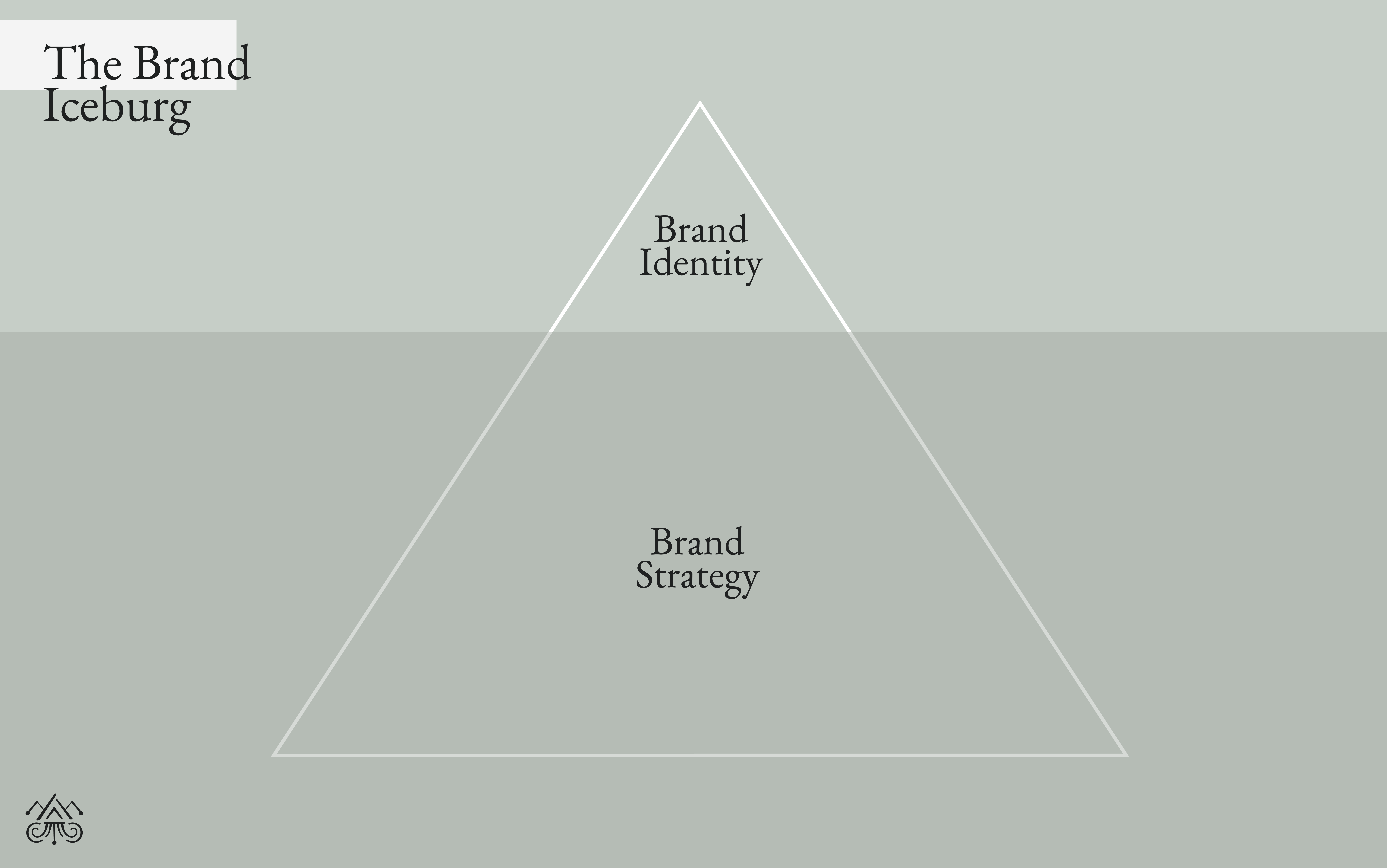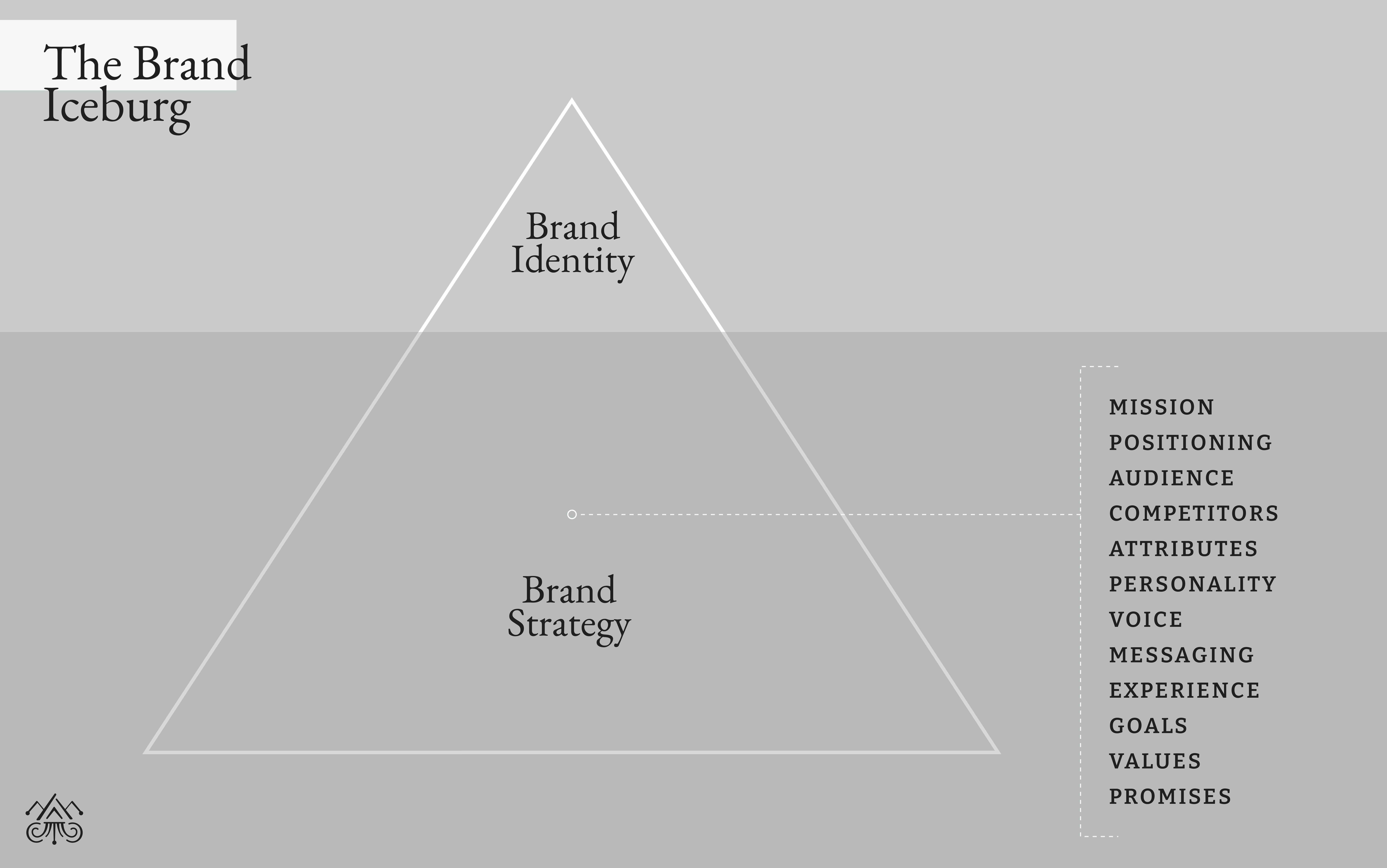peak & bayou creative company
So, what is brand strategy anyway?

September 28, 2021
Imagine you see a beautifully designed box on a shelf. The logo, the colors, the fonts pair well together. It catches your eye. You want to know what it’s all about, but when you open it, there’s nothing inside.

Now imagine, you’re creating a brand. Your logo, colors, and fonts all go well together. It catches the eye. But it’s all just arbitrary. The logo, colors, and fonts weren’t really chosen for any other reason beyond the fact that they look pretty. The brand as a whole doesn’t have a strategy behind it, so in a sense, it’s empty too.
Branding goes beyond the visuals. In order for the visuals to really work, they need a strategy behind them.
In the creative world, we think of “branding” as consisting of two parts: Brand Strategy and Brand Identity.
Brand strategy is all the stuff beneath the surface. In other words, it’s WHY you do things and HOW you do them. It’s not visual, it’s conceptual, ideological, and experiential.
Brand identity is all the stuff above the surface. In other words, it’s the visual manifestation of your brand strategy. It’s your logo and your colors. It’s visual, but it’s based on the overall experience you want to create.
To illustrate this, you’ll often see a diagram of what we call the “brand iceberg” with brand identity above the waterline and brand strategy below. The implication is that “branding” or a brand overall, much like an iceberg, is WAY bigger than what you see above the surface.

So, what makes up a brand strategy? To understand the individual elements, it’s helpful to understand the overall goal.
The goal of brand strategy is to create a roadmap for how your business will exist in its space. It answers the questions “Why?”, “Who?”, and “How?” by taking into account these foundational business concepts:
- Your business’ mission and purpose (WHY your business exists)
- Your product-market-fit (Why YOU)
- Your target audience and their needs (WHO your business serves)
- Your current and future business goals (HOW you’re going to get there)
We find the answers to these questions by building out the individual elements of a brand strategy. Those individual elements are your:
- Mission statement
- Positioning statement
- Target Audience Analysis
- Competitive Landscape
- Brand Attributes
- Brand Personality
- Brand Voice
- Messaging Strategy
- Brand Experience
- Goals
- Brand Values
- Brand Promises

Now let’s look at that list again. How does each element of brand strategy answer the questions why, who, and how? See below.
- Mission statement (Why your business exists)
- Positioning statement (Why you)
- Target Audience Analysis (Who you serve)
- Competitive Landscape (Why you’re different)
- Brand Attributes (How you’re you)
- Brand Personality (How you come across)
- Brand Voice (How you sound)
- Messaging Strategy (How you speak)
- Brand Experience (How you interact)
- Goals (How you’ll grow)
- Brand Values (How you’re motivated)
- Brand Promises (How you’ll deliver)
Imagine the potential if you knew the answers to all of those questions when it came to your business. Imagine the clarity and confidence you’d have when making decisions like where to advertise, what networking events you should go to, and what kind of systems you should integrate into your customer journey.
Beyond that, imagine using your brand strategy as the basis for your brand identity. Imagine knowing exactly how you want your business to be perceived by others so you can select visuals that match.
That’s the beauty of brand strategy. It removes the guesswork, it gives you a plan and roadmap to follow. If used consistently, it creates an experience that your customers will come to recognize. And if they recognize it, trust it, know it, and love it, they’ll keep coming back for more.
Grab a (digital) postcard!
i.e. emails you'll actually want to open.

pass it along